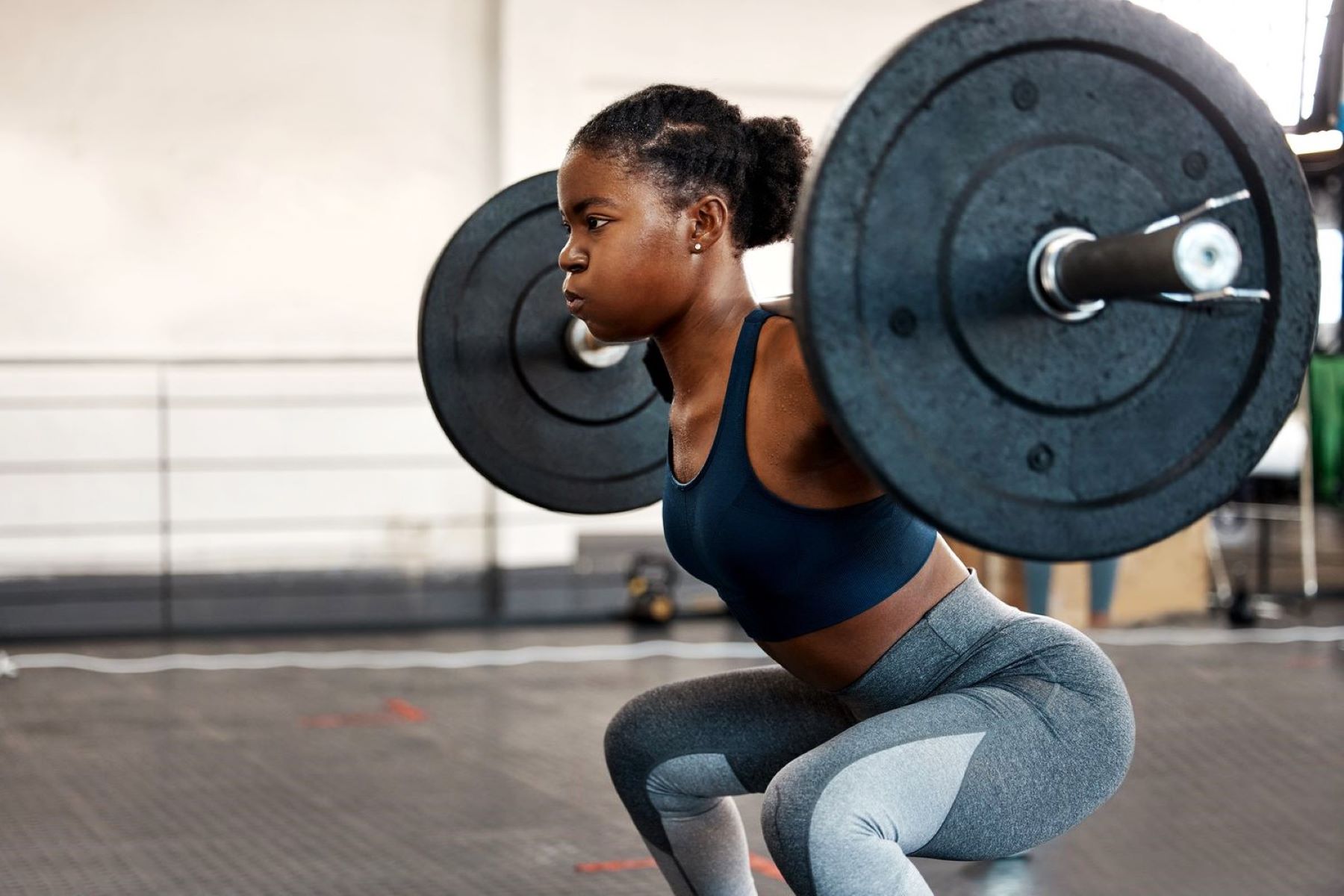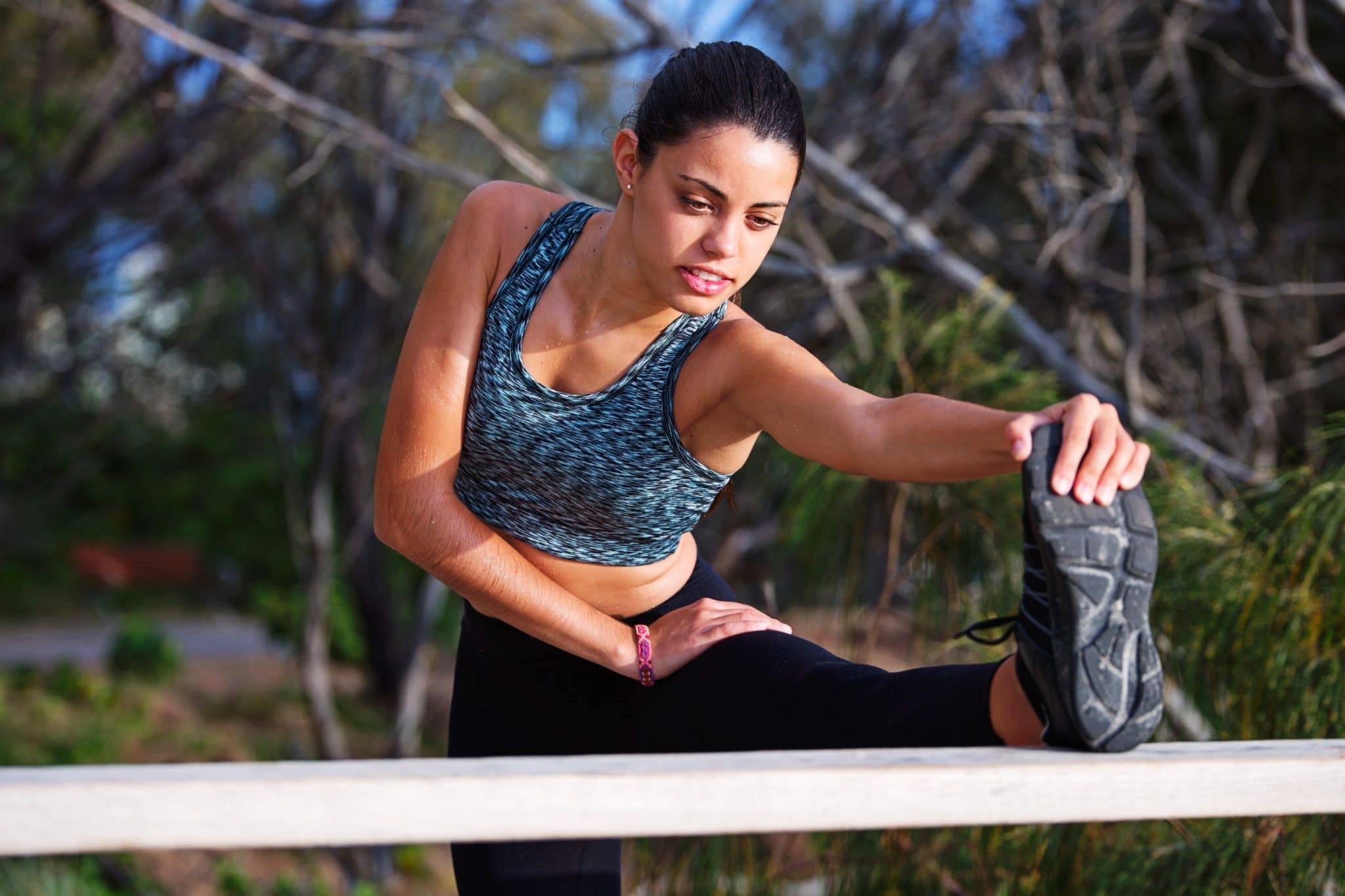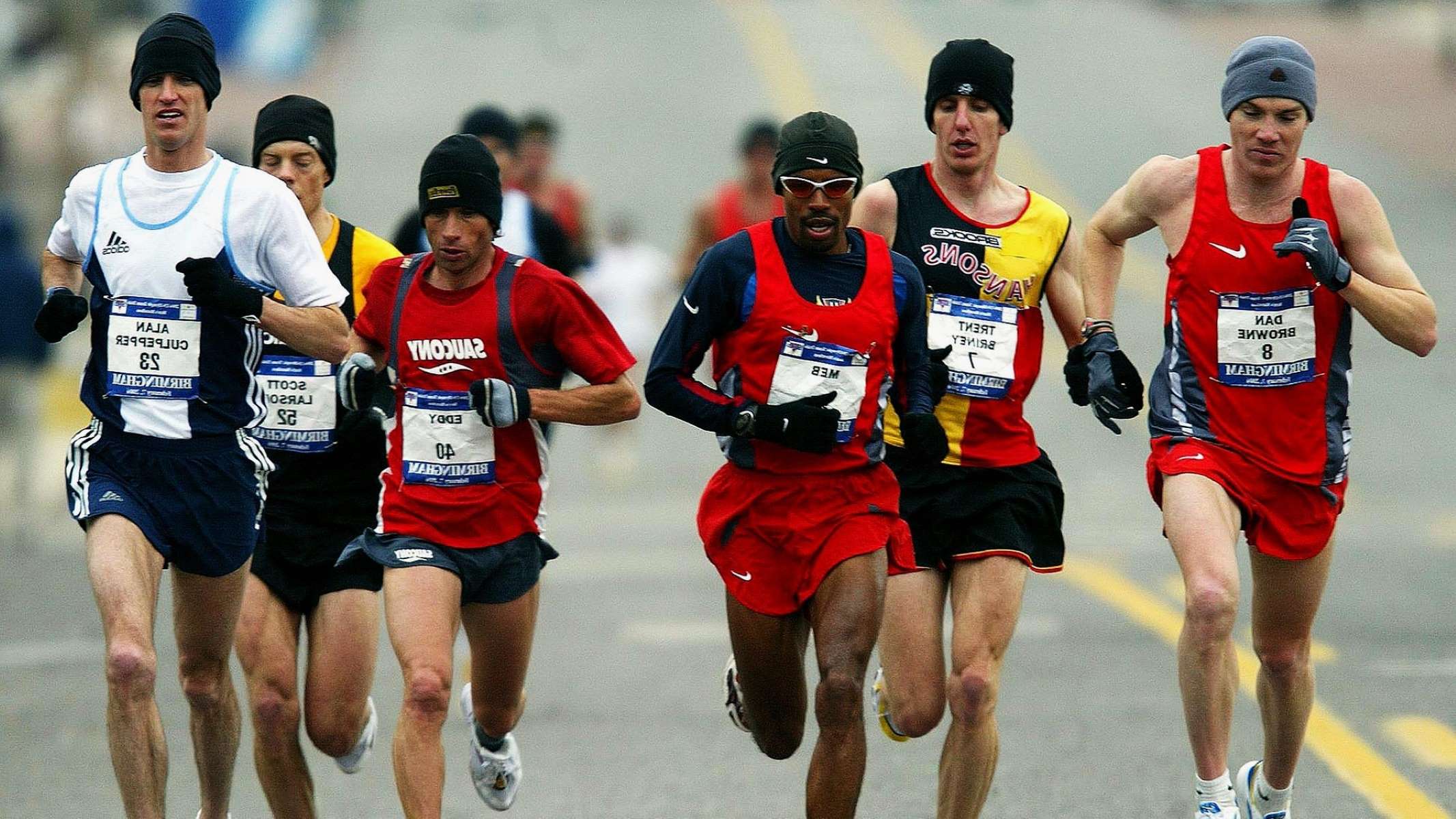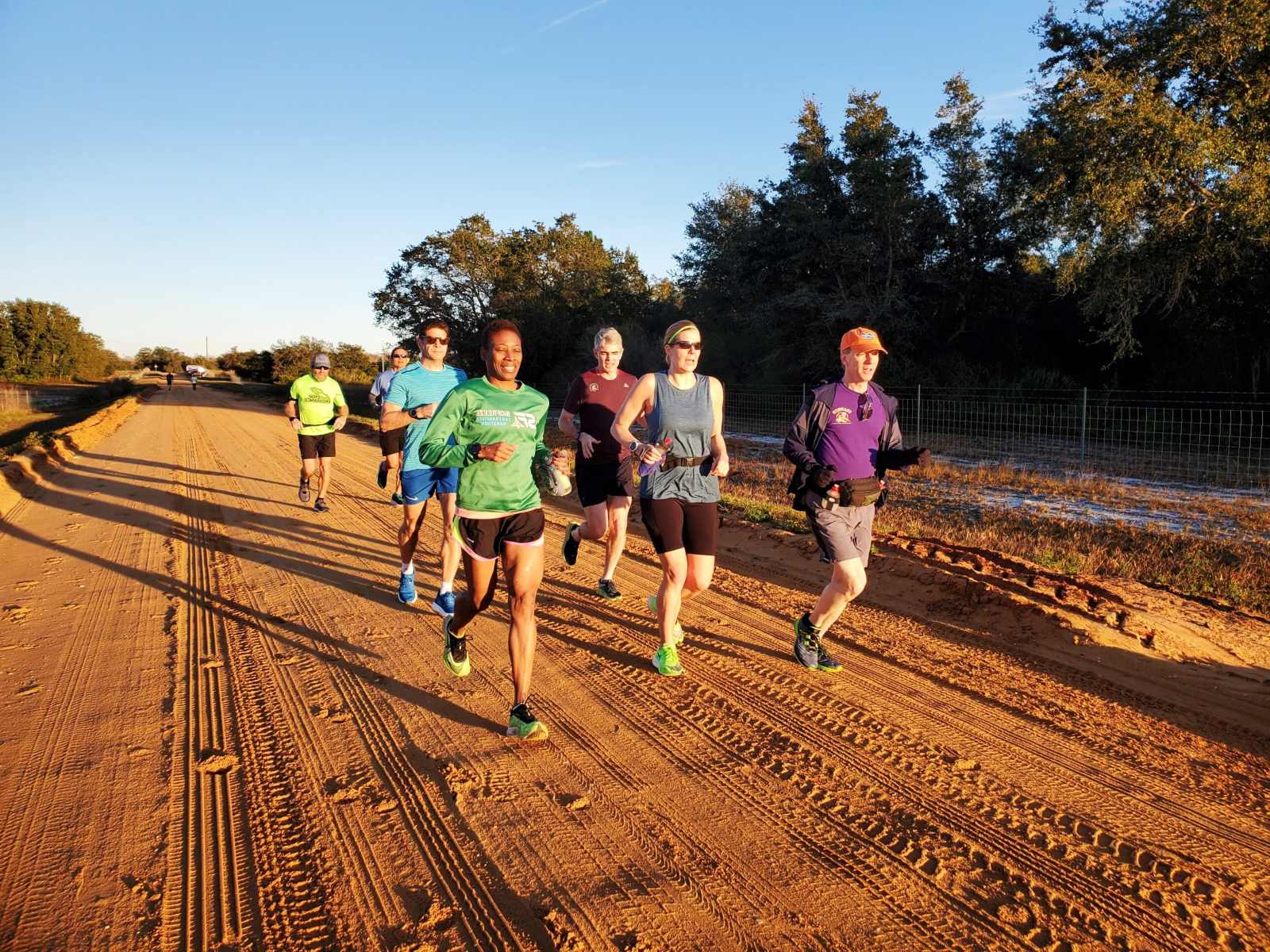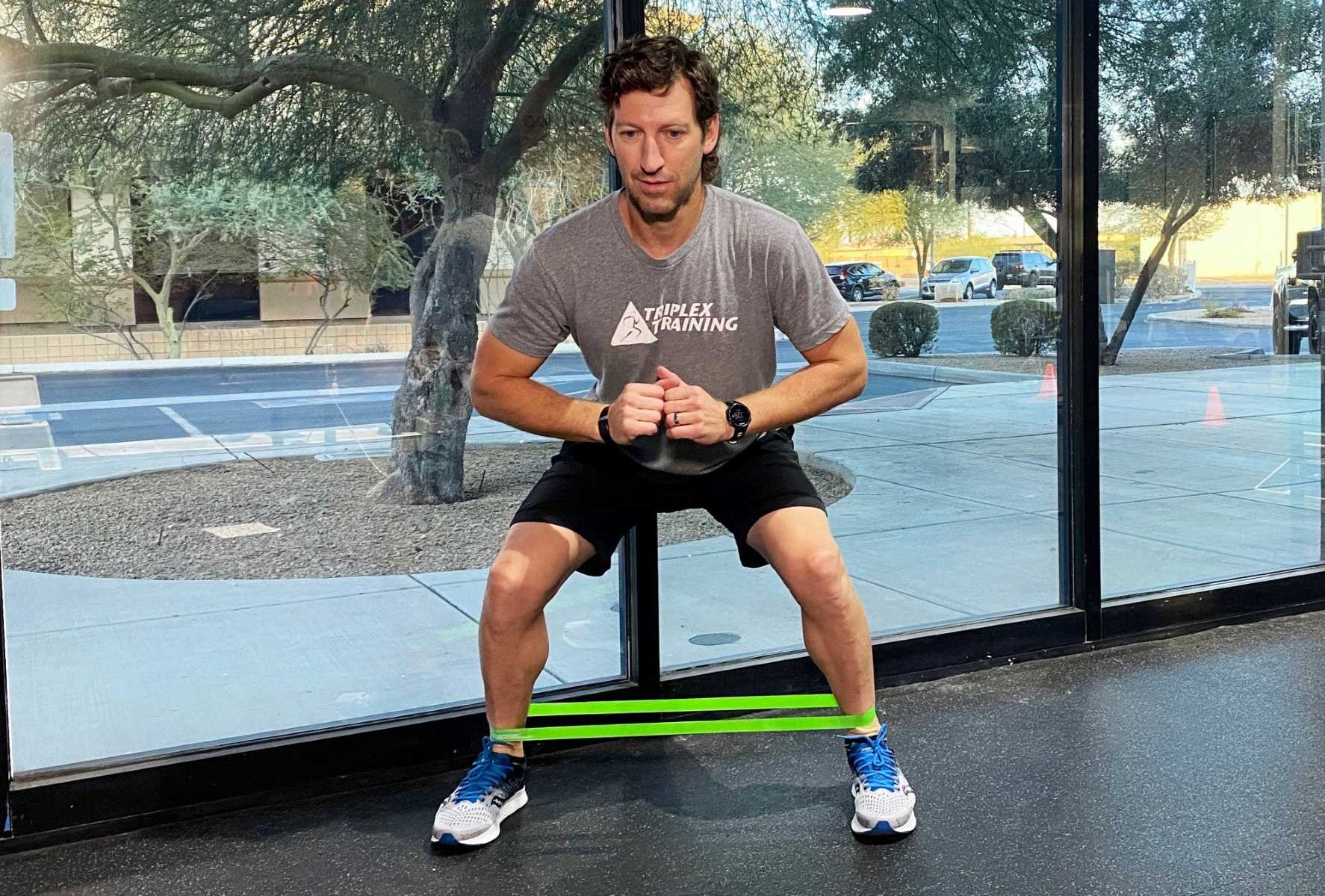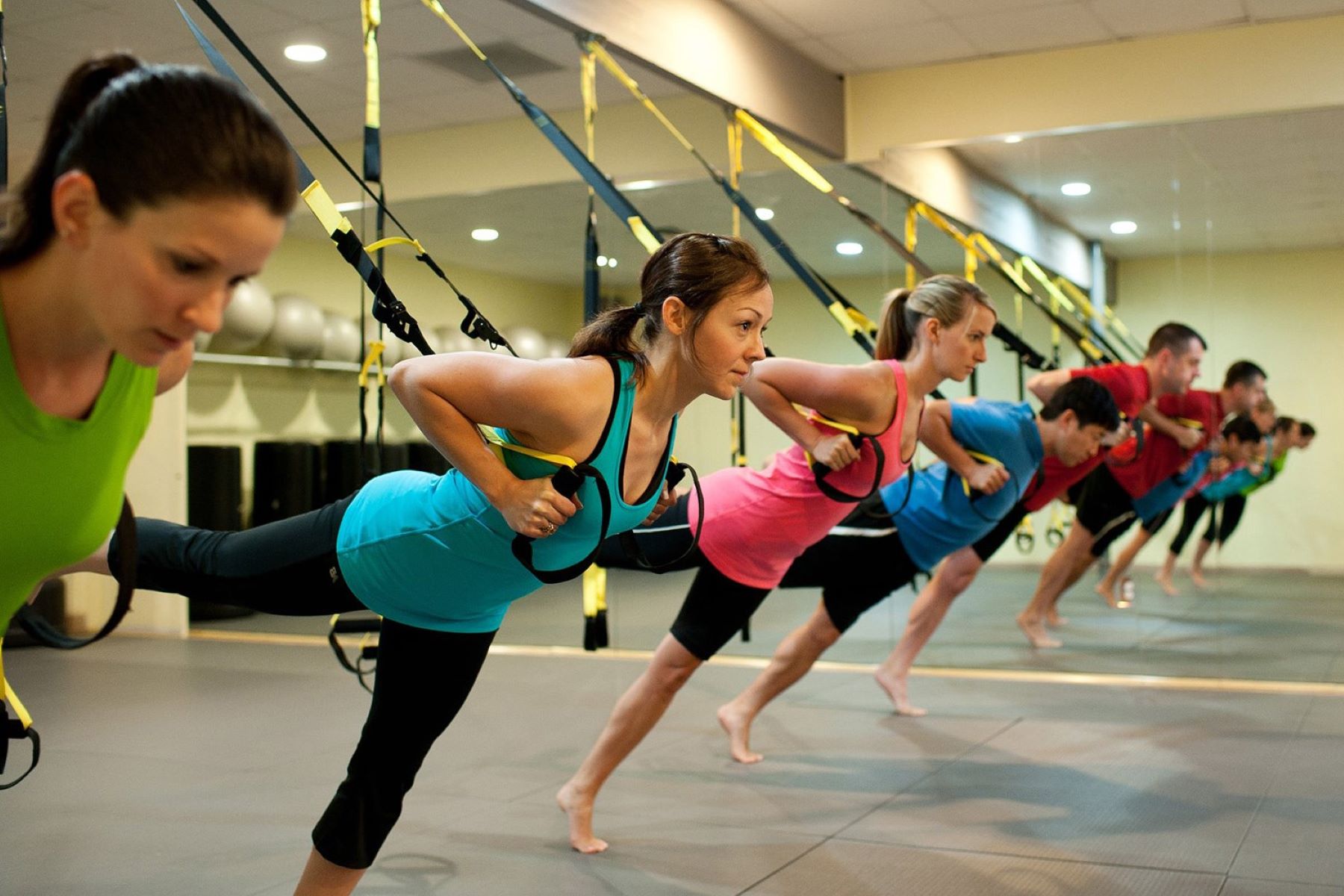Home>Training & Techniques>10 Running Exercises That Require No Equipment


Training & Techniques
10 Running Exercises That Require No Equipment
Published: March 3, 2024
Discover 10 effective running exercises that require no equipment. Improve your training and techniques with these simple yet impactful workouts.
(Many of the links in this article redirect to a specific reviewed product. Your purchase of these products through affiliate links helps to generate commission for Therunningadvisor.com, at no extra cost. Learn more)
Table of Contents
- Benefits of Bodyweight Running Exercises
- Warm-Up Exercises for Running
- Lower Body Strength Exercises for Running
- Core Strengthening Exercises for Running
- Plyometric Exercises for Running
- Agility and Balance Exercises for Running
- Endurance Building Exercises for Running
- Speed Training Exercises for Running
- Cool-Down Stretches for Running
- Tips for Incorporating Bodyweight Running Exercises into Your Routine
Benefits of Bodyweight Running Exercises
Engaging in bodyweight running exercises offers a multitude of benefits that cater to individuals of all fitness levels. These exercises, which require no equipment, provide a convenient and effective way to enhance overall physical health and well-being. Here are the key advantages of incorporating bodyweight running exercises into your fitness routine:
-
Accessible and Convenient: Bodyweight running exercises can be performed anywhere, making them an accessible fitness option for individuals with busy schedules or limited access to gym facilities. Whether you're at home, in a park, or traveling, you can seamlessly integrate these exercises into your daily routine.
-
Cost-Effective: Since no specialized equipment is needed, bodyweight running exercises eliminate the financial barrier to fitness. This makes them an affordable option for individuals seeking to improve their cardiovascular endurance, strength, and agility without investing in expensive gym memberships or workout gear.
-
Versatility and Variety: Bodyweight running exercises encompass a wide range of movements that target various muscle groups. From lunges and squats to high knees and mountain climbers, these exercises offer versatility and variety, allowing individuals to customize their workouts based on their fitness goals and preferences.
-
Functional Strength Development: By engaging in bodyweight running exercises, individuals can enhance their functional strength, which is essential for performing everyday activities with ease. These exercises promote the development of muscle strength, endurance, and flexibility, contributing to improved overall physical functionality.
-
Cardiovascular Conditioning: Incorporating bodyweight running exercises into your fitness regimen can significantly improve cardiovascular health. These exercises elevate heart rate, enhance lung capacity, and boost overall endurance, leading to improved cardiovascular conditioning and stamina.
-
Weight Management and Fat Loss: Bodyweight running exercises are effective for individuals aiming to manage their weight and reduce body fat. The combination of aerobic and strength-based movements in these exercises can contribute to increased calorie expenditure, aiding in weight management and fat loss efforts.
-
Injury Prevention and Rehabilitation: Many bodyweight running exercises focus on functional movements that promote joint stability, balance, and flexibility. By incorporating these exercises into your routine, you can reduce the risk of injuries and support the rehabilitation of existing musculoskeletal issues.
-
Enhanced Mental Well-being: Engaging in bodyweight running exercises can have a positive impact on mental well-being. The release of endorphins during physical activity can elevate mood, reduce stress, and enhance overall mental clarity and focus.
In summary, bodyweight running exercises offer a host of benefits, including accessibility, cost-effectiveness, versatility, functional strength development, cardiovascular conditioning, weight management, injury prevention, and mental well-being. By integrating these exercises into your fitness routine, you can experience holistic improvements in physical and mental health, ultimately enhancing your overall quality of life.
Warm-Up Exercises for Running
Prior to embarking on a running session, it is crucial to prepare your body for the physical demands ahead. Warm-up exercises play a pivotal role in priming your muscles, increasing blood flow, and enhancing flexibility, thereby reducing the risk of injury and optimizing performance during the run. Incorporating dynamic warm-up exercises into your pre-run routine can effectively prepare your body for the ensuing physical activity. Here are several dynamic warm-up exercises tailored specifically for running:
-
Leg Swings: Stand upright and hold onto a stable surface for support. Swing one leg forward and backward in a controlled manner, allowing the movement to dynamically stretch the hamstrings and hip flexors. Perform 10 to 15 swings on each leg to promote flexibility and mobility in the lower body.
-
High Knees: Engage in a brisk jog while lifting your knees towards your chest with each step. This exercise effectively elevates the heart rate, activates the hip flexors, and enhances lower body coordination. Aim to perform high knees for 30 to 60 seconds to stimulate blood flow and prepare the body for running.
-
Butt Kicks: While jogging in place, focus on bringing your heels towards your glutes with each step. Butt kicks effectively engage the quadriceps and hamstrings, promoting increased circulation and flexibility in the lower extremities. Perform this exercise for 30 to 60 seconds to enhance muscle readiness for running.
-
Ankle Circles: While standing, lift one foot off the ground and rotate your ankle in a circular motion, first clockwise and then counterclockwise. This exercise targets the ankle joint, promoting improved mobility and flexibility. Perform 10 to 15 circles in each direction on both ankles to enhance ankle range of motion.
-
Lunges with a Twist: Step forward into a lunge position and gently twist your torso towards the front leg. This dynamic movement effectively engages the hip flexors, glutes, and core muscles while promoting thoracic spine mobility. Perform 8 to 10 lunges on each leg, incorporating the twisting motion to activate the muscles and prepare the body for running.
By incorporating these dynamic warm-up exercises into your pre-run routine, you can effectively prime your body for the physical demands of running. These exercises promote increased blood flow, enhanced flexibility, and improved muscle activation, ultimately reducing the risk of injury and optimizing performance during your run. Remember, a well-executed warm-up sets the stage for a successful and enjoyable running experience.
Lower Body Strength Exercises for Running
Building lower body strength is essential for runners, as it contributes to improved running efficiency, power generation, and injury prevention. By incorporating targeted lower body strength exercises into your training regimen, you can enhance muscular endurance, stability, and overall performance. Here are several effective lower body strength exercises tailored to benefit runners:
-
Squats: This fundamental exercise targets the quadriceps, hamstrings, glutes, and calves, promoting overall lower body strength and stability. To perform a squat, stand with your feet shoulder-width apart, lower your body by bending your knees, and then return to the starting position. Adding variations such as jump squats or goblet squats can further intensify the exercise, contributing to enhanced muscular endurance and power development.
-
Lunges: Lunges effectively engage the quadriceps, hamstrings, and glutes while promoting unilateral strength and stability. To execute a lunge, step forward with one leg, lowering your body until both knees are bent at a 90-degree angle, and then return to the starting position. Incorporating walking lunges or reverse lunges can diversify the movement patterns, stimulating muscle growth and balance enhancement.
-
Calf Raises: Strong calf muscles are crucial for propelling the body forward during running. Calf raises involve lifting your body onto the balls of your feet, effectively targeting the calf muscles. Performing calf raises on a raised surface or incorporating single-leg calf raises can intensify the exercise, contributing to improved calf strength and endurance.
-
Step-Ups: This exercise simulates the motion of climbing stairs, targeting the quadriceps, hamstrings, and glutes. To perform a step-up, place one foot on an elevated platform and push through the heel to lift your body upward, then lower back down. Utilizing varying step heights and incorporating weights can enhance the challenge, promoting increased lower body strength and power development.
-
Bridge Exercise: Bridges effectively engage the glutes and hamstrings, promoting improved hip stability and strength. To execute a bridge, lie on your back with knees bent, lift your hips off the ground, and hold the position before lowering back down. Adding variations such as single-leg bridges or elevated bridges can intensify the exercise, contributing to enhanced glute activation and overall lower body strength.
Incorporating these lower body strength exercises into your training routine can significantly enhance your running performance by promoting muscular strength, endurance, and stability. By consistently engaging in these exercises, you can fortify your lower body musculature, reduce the risk of running-related injuries, and ultimately optimize your running experience.
Core Strengthening Exercises for Running
A strong and stable core is paramount for runners, as it serves as the foundation for efficient running mechanics, posture maintenance, and injury prevention. By incorporating targeted core strengthening exercises into your training regimen, you can enhance muscular endurance, balance, and overall running performance. Here are several effective core strengthening exercises tailored to benefit runners:
-
Plank Variations: Planks are a cornerstone of core strengthening exercises, engaging the entire core musculature, including the rectus abdominis, transverse abdominis, obliques, and lower back muscles. The traditional forearm plank involves maintaining a straight body position supported by the forearms and toes, effectively activating the core muscles. Variations such as side planks, plank with leg lifts, and plank rotations can diversify the exercise, stimulating overall core strength and stability.
-
Russian Twists: This exercise targets the obliques and deep core muscles, promoting rotational strength and stability. To perform Russian twists, sit on the ground with knees bent, lean back slightly, and rotate the torso from side to side while holding a weight or medicine ball. This dynamic movement effectively engages the core muscles, enhancing rotational strength essential for maintaining stability during running.
-
Dead Bug Exercise: The dead bug exercise is a valuable core strengthening movement that targets the rectus abdominis and promotes improved coordination and stability. While lying on your back with arms extended towards the ceiling and legs raised in a tabletop position, alternate extending opposite arm and leg while maintaining core engagement. This exercise effectively challenges the core muscles, contributing to enhanced stability and balance during running.
-
Bicycle Crunches: Bicycle crunches effectively engage the rectus abdominis and obliques, promoting improved core endurance and strength. To perform bicycle crunches, lie on your back, lift your shoulders off the ground, and alternately bring your elbows towards the opposite knee while extending the other leg. This dynamic movement effectively targets the core muscles, enhancing overall abdominal strength and stability.
-
Hollow Body Hold: The hollow body hold is a challenging exercise that targets the entire core, including the deep stabilizing muscles. While lying on your back, lift your shoulders and legs off the ground, creating a "hollow" shape with your body. This isometric exercise effectively engages the core muscles, promoting improved endurance and stability crucial for maintaining proper running form.
Incorporating these core strengthening exercises into your training routine can significantly enhance your running performance by promoting core stability, endurance, and overall strength. By consistently engaging in these exercises, you can fortify your core musculature, reduce the risk of running-related injuries, and ultimately optimize your running experience.
Plyometric Exercises for Running
Plyometric exercises, also known as jump training, are dynamic movements that involve rapid and explosive muscle contractions, aiming to enhance muscular power, agility, and overall athletic performance. When tailored specifically for running, plyometric exercises can significantly benefit runners by improving stride length, running economy, and neuromuscular coordination. These exercises effectively engage the stretch-shortening cycle of muscles, allowing for greater force production and energy transfer during running movements.
Incorporating plyometric exercises into a comprehensive running training regimen can contribute to enhanced running performance and injury prevention. Here are several plyometric exercises tailored to benefit runners:
-
Box Jumps: Box jumps involve explosively jumping onto a raised platform, then stepping or jumping back down. This exercise effectively engages the quadriceps, hamstrings, and calf muscles, promoting improved lower body power and explosiveness essential for generating strong and efficient running strides.
-
Bounding: Bounding is a dynamic exercise that involves exaggerated running strides with powerful push-offs and maximal air time between strides. This exercise targets the hip flexors, glutes, and calf muscles, promoting enhanced running stride length and explosive propulsion.
-
Depth Jumps: Depth jumps entail stepping off a raised platform and immediately exploding into a vertical jump upon landing. This exercise effectively engages the leg muscles and promotes rapid force production, contributing to improved running power and reactive strength.
-
Single-Leg Hops: Single-leg hops involve hopping forward or laterally on one leg, focusing on explosive take-offs and controlled landings. This exercise targets the calf muscles, ankle stabilizers, and proprioceptive abilities, promoting improved single-leg strength and stability crucial for running performance.
-
Squat Jumps: Squat jumps combine a deep squat position with an explosive vertical jump, effectively engaging the quadriceps, glutes, and calf muscles. This exercise promotes improved lower body power and force production, contributing to enhanced running propulsion and sprinting capabilities.
By integrating these plyometric exercises into a well-rounded running training program, individuals can experience enhanced muscular power, agility, and neuromuscular coordination, ultimately leading to improved running performance and reduced risk of overuse injuries. It is important to gradually introduce plyometric exercises into the training regimen and ensure proper form and technique to maximize their benefits while minimizing the risk of injury.
In summary, plyometric exercises tailored for running offer a valuable means of enhancing muscular power, agility, and neuromuscular coordination, ultimately contributing to improved running performance and injury prevention. When incorporated thoughtfully and progressively, these exercises can serve as a valuable asset in a runner's training arsenal, leading to enhanced running efficiency and overall athletic prowess.
Agility and Balance Exercises for Running
Agility and balance are integral components of a runner's skill set, playing a crucial role in optimizing running efficiency, reducing the risk of injuries, and enhancing overall athletic performance. By incorporating targeted agility and balance exercises into a comprehensive training regimen, runners can improve their coordination, proprioception, and dynamic stability, ultimately leading to enhanced running prowess. Here are several effective agility and balance exercises tailored to benefit runners:
-
Lateral Bounds: Lateral bounds involve explosive side-to-side movements, emphasizing quick take-offs and controlled landings. By propelling the body laterally and maintaining stability upon landing, runners can enhance their lateral strength, dynamic balance, and neuromuscular coordination. This exercise is particularly beneficial for navigating uneven terrain and swiftly changing directions during running.
-
Cone Drills: Setting up a series of cones to create a designated course, runners can engage in agility drills that involve rapid changes in direction, acceleration, and deceleration. Negotiating the course with precision and speed challenges the body's ability to adapt to varying movement patterns, enhancing agility, spatial awareness, and reactive responsiveness.
-
Single-Leg Balance Exercises: Performing single-leg balance exercises, such as single-leg stands or single-leg reaches, can significantly improve proprioception, ankle stability, and overall balance. By standing on one leg and maintaining stability while performing controlled movements, runners can enhance their ability to stabilize the body during running strides, reducing the risk of ankle sprains and enhancing overall running efficiency.
-
Agility Ladder Drills: Agility ladder drills involve intricate footwork patterns within a ladder-like grid, promoting rapid foot placement, coordination, and agility. By navigating through the ladder with precision and speed, runners can enhance their foot-eye coordination, quicken their stride turnover, and improve their ability to swiftly adapt to varying ground contact patterns.
-
BOSU Ball Exercises: Utilizing a BOSU ball, runners can engage in exercises that challenge dynamic balance and stability. Movements such as single-leg squats, BOSU ball lunges, and BOSU ball planks require heightened proprioception and core engagement, ultimately enhancing overall balance and stability crucial for running mechanics.
Incorporating these agility and balance exercises into a runner's training regimen can significantly enhance dynamic stability, coordination, and reactive responsiveness, ultimately leading to improved running performance and reduced risk of lower extremity injuries. By consistently engaging in these exercises, runners can fortify their agility, balance, and neuromuscular coordination, ultimately optimizing their running experience and overall athletic capabilities.
Endurance Building Exercises for Running
Endurance is a cornerstone of successful running, encompassing the ability to sustain prolonged physical activity while maintaining optimal performance. Endurance building exercises play a pivotal role in enhancing cardiovascular capacity, muscular stamina, and mental resilience, ultimately contributing to improved running efficiency and longevity. By incorporating targeted endurance building exercises into a comprehensive training regimen, runners can fortify their aerobic capacity, delay the onset of fatigue, and elevate their overall endurance threshold.
Long-Distance Runs
Long-distance runs serve as a fundamental component of endurance building for runners. By gradually increasing the duration and distance of their runs, individuals can adapt their bodies to sustained physical exertion, thereby enhancing cardiovascular efficiency and muscular endurance. Long runs challenge the body to utilize oxygen more effectively, improve energy utilization, and bolster mental fortitude, all of which are essential for conquering extended running sessions and races.
Tempo Runs
Tempo runs, also known as threshold runs, involve sustained efforts at a comfortably hard pace, typically at or slightly below race pace. These workouts challenge runners to sustain a challenging yet manageable intensity for an extended duration, promoting improved lactate threshold, aerobic capacity, and mental resilience. Tempo runs effectively simulate the demands of race conditions, allowing runners to adapt to sustained efforts and optimize their endurance capabilities.
Read more: Gear Review: Kinomap Trainer
Fartlek Training
Fartlek, a Swedish term for "speed play," involves unstructured interval training that integrates varying intensities and durations of running. By incorporating bursts of speed within a continuous run, runners can enhance their aerobic and anaerobic capacities, improve running economy, and cultivate mental adaptability to changing paces. Fartlek training promotes versatility in pacing and energy system utilization, ultimately contributing to enhanced endurance and race performance.
Hill Repeats
Hill repeats entail running uphill at a challenging effort level, followed by a recovery period, and repeating the cycle multiple times. This form of high-intensity interval training targets muscular strength, cardiovascular endurance, and mental resilience. By conquering uphill efforts, runners can enhance their ability to sustain elevated heart rates, develop muscular power, and fortify mental toughness, all of which are essential for enduring challenging race conditions and terrain.
Progressive Long Runs
Progressive long runs involve gradually increasing the pace throughout the duration of a long run, culminating in a strong finish at a faster pace. This approach challenges runners to conserve energy early in the run and progressively elevate their effort, simulating race scenarios and promoting improved pacing strategies. Progressive long runs effectively enhance aerobic capacity, mental resilience, and the ability to finish strong, all of which are crucial for endurance building and race performance.
By integrating these endurance building exercises into their training regimen, runners can significantly enhance their ability to sustain prolonged physical exertion, optimize their cardiovascular and muscular capacities, and elevate their overall endurance threshold. Consistent engagement in these exercises fosters the development of a robust aerobic foundation, mental fortitude, and race-specific adaptability, ultimately leading to improved running performance and the ability to conquer endurance challenges with confidence and resilience.
Speed Training Exercises for Running
Speed training is a crucial component of a comprehensive running regimen, as it focuses on enhancing running economy, stride turnover, and neuromuscular coordination. By incorporating targeted speed training exercises, runners can improve their ability to generate and sustain higher velocities, ultimately leading to enhanced race performance and overall running efficiency.
Interval Training
Interval training involves alternating between periods of high-intensity running and active recovery. This structured approach challenges runners to push their limits during intense intervals, promoting improved anaerobic capacity, lactate threshold, and running speed. By incorporating intervals of varying distances and durations, runners can adapt to sustained efforts at elevated speeds, ultimately enhancing their ability to maintain faster paces during races and training sessions.
Sprints
Sprints are short, maximal-effort bursts of running that target explosive power and stride turnover. By engaging in sprints of varying distances, such as 100 meters, 200 meters, or even shorter distances, runners can enhance their neuromuscular coordination, fast-twitch muscle recruitment, and overall running speed. Sprints effectively challenge the body to generate rapid force production and promote efficient ground contact times, contributing to improved acceleration and top-end speed.
Hill Sprints
Hill sprints involve sprinting uphill at maximal effort, followed by a recovery period. This form of high-intensity training targets muscular power, cardiovascular capacity, and mental resilience. By conquering uphill sprints, runners can enhance their ability to generate force against gravity, improve running economy, and fortify mental toughness. Hill sprints effectively simulate race conditions and challenging terrain, ultimately contributing to enhanced speed and race performance.
Strides
Strides, also known as accelerations, are short bursts of running at near-maximal effort, typically lasting 20 to 30 seconds. These controlled sprints allow runners to focus on proper running form, quick turnover, and relaxed yet powerful strides. By incorporating strides into their training routine, runners can improve their running mechanics, neuromuscular coordination, and the ability to transition to faster paces during races and workouts.
Fartlek Speed Play
Fartlek training, characterized by unstructured intervals of varying intensities, allows runners to incorporate speed play into their runs. By spontaneously increasing the pace for short durations during a run, runners can enhance their ability to adapt to varying speeds and intensities, ultimately improving their overall running speed and race performance. Fartlek speed play promotes versatility in pacing and energy system utilization, contributing to enhanced speed and endurance.
By integrating these speed training exercises into their running regimen, individuals can significantly enhance their ability to generate and sustain higher velocities, improve running economy, and optimize their neuromuscular coordination. Consistent engagement in speed training fosters the development of a robust anaerobic foundation, fast-twitch muscle recruitment, and race-specific adaptability, ultimately leading to improved running performance and the ability to achieve faster and more efficient running strides.
Cool-Down Stretches for Running
After completing a challenging running session, it is essential to allocate time for a comprehensive cool-down routine, which includes targeted stretches aimed at promoting muscle recovery, flexibility, and injury prevention. Cool-down stretches play a crucial role in aiding the body's transition from vigorous physical activity to a state of rest, ultimately facilitating the restoration of muscle length, joint mobility, and overall post-run comfort.
Importance of Cool-Down Stretches
Cool-down stretches serve as a vital component of a runner's post-run routine, offering a myriad of benefits that contribute to overall physical well-being and performance. By engaging in targeted stretches following a running session, runners can effectively alleviate muscle tension, reduce the risk of post-exercise soreness, and promote improved circulation and nutrient delivery to the muscles. Additionally, cool-down stretches aid in the dissipation of accumulated lactic acid, which can contribute to muscle fatigue and discomfort, ultimately expediting the recovery process and preparing the body for future training sessions.
Effective Cool-Down Stretches for Runners
-
Hamstring Stretch: While standing or seated, extend one leg forward and gently lean forward from the hips, aiming to feel a stretch in the back of the thigh. Hold the stretch for 20-30 seconds on each leg to promote improved hamstring flexibility and reduce muscle tightness.
-
Quadriceps Stretch: Standing tall, grasp one foot behind you and gently pull it towards your glutes, feeling a stretch in the front of the thigh. Hold the stretch for 20-30 seconds on each leg to alleviate tension in the quadriceps muscles, which are heavily engaged during running.
-
Calf Stretch: Utilizing a wall or sturdy object for support, place one foot behind you with the heel on the ground and gently lean forward, feeling a stretch in the calf muscle. Hold the stretch for 20-30 seconds on each leg to promote improved calf flexibility and reduce the risk of tightness and discomfort.
-
Hip Flexor Stretch: Assume a lunge position with one knee on the ground and the other foot forward, gently leaning forward to feel a stretch in the front of the hip. Hold the stretch for 20-30 seconds on each side to alleviate tension in the hip flexors, which can become tight from prolonged running.
-
IT Band Stretch: While standing, cross one leg behind the other and lean to the side, feeling a stretch along the outer thigh and hip. Hold the stretch for 20-30 seconds on each side to promote improved flexibility and reduce tightness in the IT band, which can impact knee and hip alignment during running.
Read more: Top 10 Running Skills Workouts
Incorporating Cool-Down Stretches into Your Routine
By dedicating 5-10 minutes to a post-run cool-down routine that includes targeted stretches, runners can effectively support muscle recovery, reduce the risk of post-exercise discomfort, and promote improved flexibility and range of motion. It is important to perform these stretches in a controlled and gentle manner, avoiding bouncing or aggressive movements that may lead to muscle strain or injury. Additionally, deep breathing and relaxation techniques can be incorporated during cool-down stretches to enhance the overall relaxation and recovery process.
In summary, cool-down stretches for running play a pivotal role in promoting muscle recovery, flexibility, and injury prevention. By incorporating targeted stretches into the post-run routine, runners can effectively support their physical well-being, reduce the risk of post-exercise discomfort, and optimize their readiness for future training sessions and races.
Tips for Incorporating Bodyweight Running Exercises into Your Routine
Incorporating bodyweight running exercises into your fitness routine can significantly enhance your overall physical health and well-being. Whether you're a seasoned runner or just beginning your fitness journey, integrating bodyweight exercises offers a convenient and effective way to improve cardiovascular endurance, strength, and agility without the need for specialized equipment. Here are some valuable tips for seamlessly integrating bodyweight running exercises into your routine:
-
Start Gradually and Progress Slowly: If you're new to bodyweight exercises or running, it's essential to start gradually and progress at a pace that suits your fitness level. Begin with basic movements such as squats, lunges, and planks, and gradually increase the intensity and complexity of exercises as your strength and endurance improve.
-
Create a Balanced Routine: Incorporate a variety of bodyweight exercises that target different muscle groups and movement patterns. This balanced approach ensures comprehensive muscular development and reduces the risk of overuse injuries. Include exercises for the lower body, core, upper body, and dynamic movements such as plyometrics and agility drills.
-
Focus on Proper Form and Technique: Paying attention to proper form and technique is crucial for maximizing the effectiveness of bodyweight exercises and reducing the risk of injury. Prioritize quality over quantity, and ensure that you perform each exercise with controlled movements and proper alignment.
-
Utilize Interval Training: Integrate bodyweight exercises into interval training sessions to enhance cardiovascular conditioning and muscular endurance. Alternating between periods of high-intensity bodyweight exercises and active recovery or running segments can elevate your heart rate and promote overall fitness gains.
-
Embrace Outdoor Workouts: Take advantage of outdoor spaces such as parks, trails, or open fields to perform bodyweight running exercises. Outdoor workouts provide a refreshing change of scenery and allow for varied terrain, which can further challenge your balance and stability.
-
Combine Bodyweight Exercises with Running: Incorporate bodyweight exercises into your running routine by interspersing them with running intervals. For example, perform a set of bodyweight lunges or squats followed by a short sprint or jog, creating a dynamic and engaging workout that targets both strength and cardiovascular fitness.
-
Set Realistic Goals and Track Progress: Establish specific goals for your bodyweight running exercises, whether it's increasing the number of repetitions, improving endurance, or mastering advanced variations of exercises. Tracking your progress can provide motivation and a sense of accomplishment as you witness improvements in strength and fitness.
-
Prioritize Recovery and Rest: Allow adequate time for rest and recovery between bodyweight exercise sessions and running workouts. Recovery is essential for muscle repair and adaptation, ultimately contributing to improved performance and injury prevention.
By implementing these tips, you can seamlessly integrate bodyweight running exercises into your fitness routine, reaping the numerous benefits they offer. Whether you prefer the convenience of at-home workouts or the invigorating experience of outdoor training, bodyweight exercises provide a versatile and accessible means of enhancing your overall fitness and running performance.

